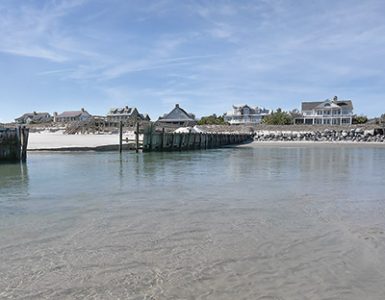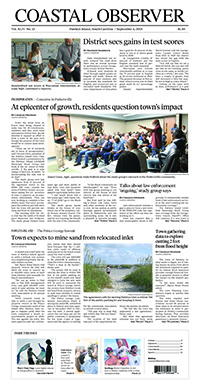Pawleys Island
As inlet continues to migrate Prince George group files lawsuit

The migration of Pawleys Inlet has prompted a third lawsuit against the state, the town of Pawleys Island and its contractors seeking to shift the inlet north to its location before the town conducted a beach renourishment project.
The Prince George Community Association filed suit last week asking the Circuit Court for an injunction “requiring Defendants to immediately restore the Inlet to its pre-renourishment location and to restore the oceanfront and creek side sand dunes,” according to the complaint.
Bud and Melesa Watts, who own the northernmost oceanfront house at Prince George, filed suit last May against the town, the state Department of Parks, Recreation and Tourism, the Department of Health and Environmental Control, Marinex Construction and Coastal Science and Engineering. They said the inlet between Pawleys Island and Prince George had moved south by 300 feet since the town completed its renourishment project in the spring of 2020. They also sought an order requiring that the inlet be restored to its original location.
A month later, a group of oceanfront property owners and others who said their access to the beach at Prince George was affected by the shifting inlet filed a similar suit.
The latest suit says that the continued erosion threatens the common property owned by the community association as well as the property of its members.
“This erosion has washed away huge, decades-old dunes, destroyed decades-old live oak trees landward of the dunes, and washed away previously high ground behind the dunes,” according to the court filing. “This severe erosion continues at an unprecedented pace.”
When the first suit was filed, the inlet was still north of the Watts house and waves were eroding a sand dune. The inlet now runs through the remains of a wooden groin that is south of the Watts house on the beach at Prince George.
The Pawleys Island renourishment project placed 1.1 million cubic yards of offshore sand on the beach from the south end parking lot to Second Street on the north end. The $14.8 million project was funded by the town and with a grant from PRT.
Each of the suits highlights a 2010 study that was prepared by Coastal Science and Engineering that predicted that a renourishment project would cause Pawleys Inlet to shift. The study was conducted for the Prince George association. Coastal Science also designed the renourishment project, which was conducted by Marinex.
DHEC issued a permit for the project, and the town carried it out, “despite knowing and/or having substantial reason to know that the project sand would flow with the littoral drift to build up the spit and cause the extreme accelerated southerly migration of the Inlet, which in turn would result in unprecedented, accelerated erosion to Prince George,” according to the recent suit.
It also seeks damages for negligence, trespass and nuisance. It claims that the plaintiffs’ actions are an unfair trade practice, which would entitle the association to triple the actual damages.
A judge is scheduled next month to hear a motion to dismiss the Watts suit against PRT. The agency says that the Wattses failed to challenge the DHEC permit for the renourishment project even though they knew about the potential for harm they cite in the 2010 study by Coastal Science.
“Plaintiffs failed to challenge the beach renourishment project at the permitting stage, and thus failed to fulfill the requirements of their legal remedy,” according to the PRT filing.




